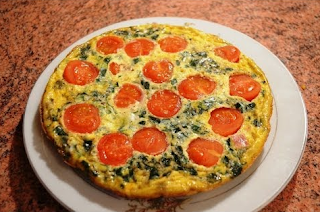The days when you cook for many people a reason to yourself to take a frozen pizza from the fridge. To offer you inspiration come regularly single meals over on Food Explorer, so you can quickly and easily something really nice for yourself can put on the table. As a piece of baked salmon fillet with fennel-orange salad.
For example you can serve baked potatoes with this dish, but personally I find it so fine. There remains room for dessert! How about caramel-chocolate slices ?
- Heat a splash of coconut or olive oil in a frying pan. Cut the anchovies into small pieces and fry in the oil until they "melt". It's okay if not everything dissolves in the oil, but the fish have to disintegrate into small pieces; mash a little help with a ladle that. Add the fennel and cook for one minute 10 until the fennel is tender.
- Cut now the orange segments out. You only half of the orange wedges necessary, the other half you squeeze out over a glass of juice.
- Pour the orange juice tray with fennel after 10 minutes. Let simmer for a minute and then add also add the orange segments. Lower the heat and simmer very gently while you cook salmon.
- Brush the salmon with a little olive oil and sprinkle both sides with salt and pepper. Bake the salmon fillet cooked in 8-12 minutes depending on the thickness of the slice. Ideally, the fish inside still glassy, as you see in the picture.
- Serve possibly with some tufts of green leaves of the fennel bulb. Bon appetit!



